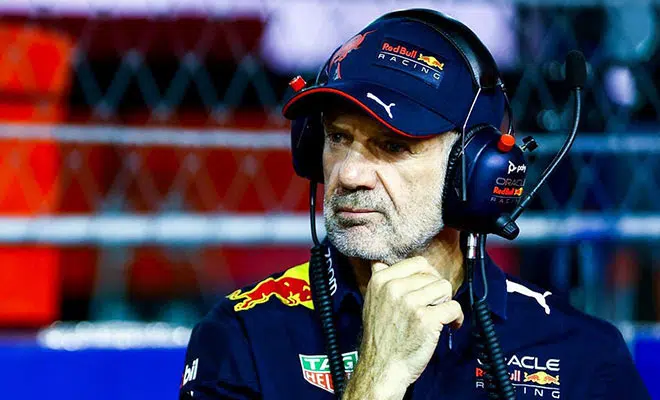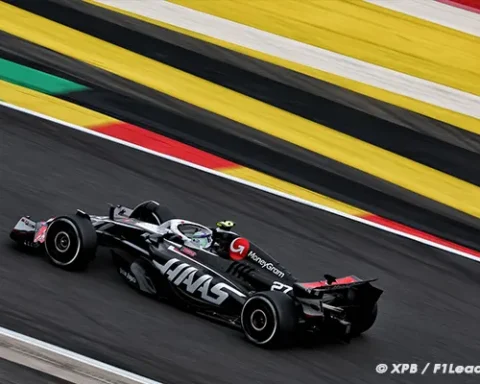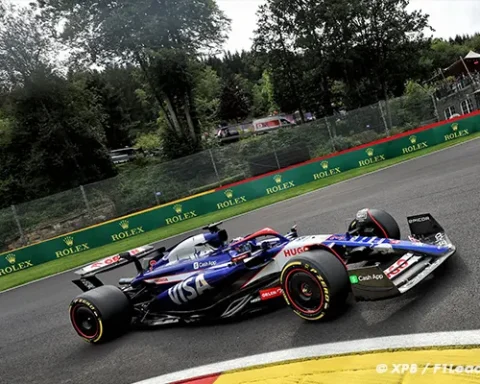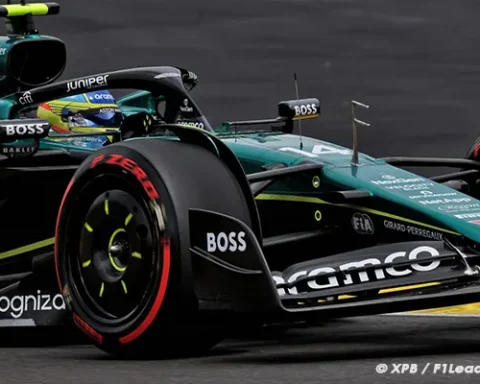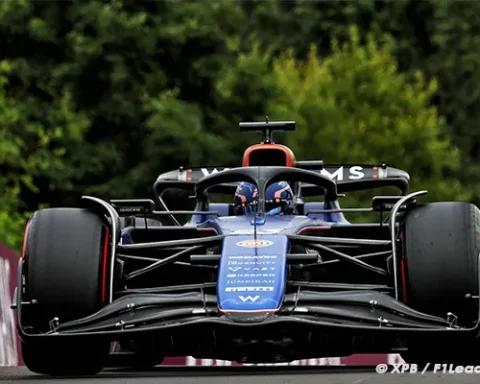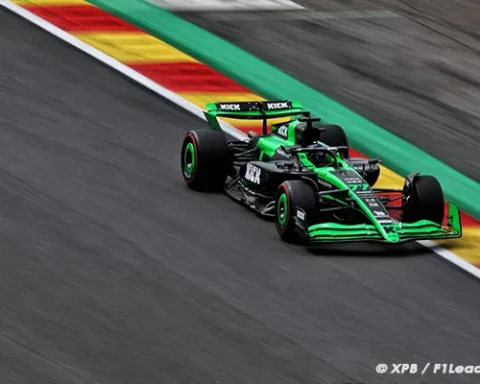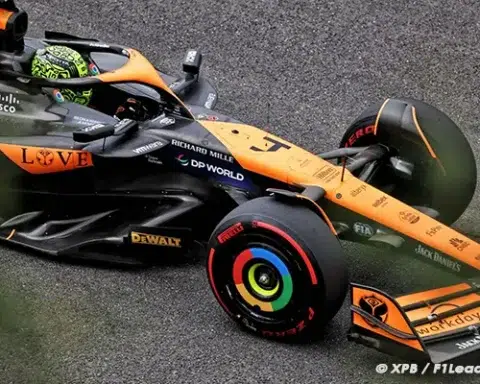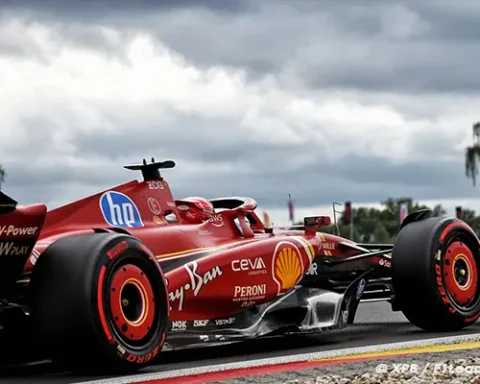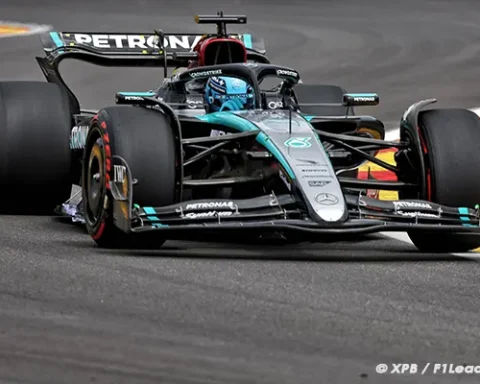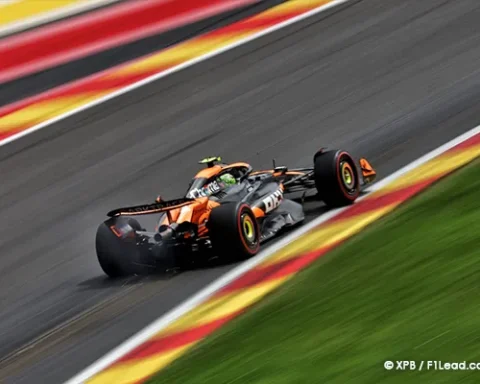Adrian Newey, renowned for his revolutionary designs, has significantly impacted Formula 1. His innovative approach has led to a series of groundbreaking cars, reshaping the competitive landscape of the sport.
Newey designed an impressive fourteen championship-winning cars during his Formula 1 career, including seven for Red Bull Racing and three for Max Verstappen. The RB19 from last season might have been his masterpiece. But can he outdo himself with the RB20? F1Lead lines up his feats at the Austrian racing team.
We start… not at the beginning of his career. Rather, at Red Bull, where Newey was appointed Chief Technical Officer for the 2006 season. The British engineer signed a long-term contract with the newly established Austrian racing team, which came into existence when Jaguar Grand Prix was sold to the energy drink manufacturer at the end of 2004. About a decade and a half later, Newey is still on board at Red Bull, where he has repeatedly proven his worth.
Vettel Supremacy (2010-2013).
In 2007, Red Bull drivers David Coulthard and Mark Webber first got behind the wheel of a Newey-designed RB car, but his success story in Milton Keynes truly began with the RB6, three years later. At first glance, the car seemed a copy of the RB5, but the vehicle had a wider rear to accommodate the double diffuser, which in turn generated more downforce. The RB6 won nine of the eighteen Grands Prix that season, and Sebastian Vettel became world champion for the first time. Red Bull also took home the constructors’ trophy in 2010.
The RB7 was a true hit. Red Bull dominated in 2011, winning both the constructors’ and drivers’ championships. This car entered the history books as one of the fastest ever in Formula 1. To gauge its speed: the RB7 was nearly always on pole position, failing to achieve this just once. Vettel clinched his second consecutive world championship, leading the first runner-up, Jenson Button, by a whopping 122 points. Red Bull remained on top, despite regulatory changes that posed significant challenges for Newey. The double diffuser, a key to the RB6’s success, was banned, and the Drag Reduction System (DRS) was introduced.
As dominant as the 2011 season was for Red Bull, the following year proved to be much tighter. Red Bull won only three of the first thirteen races. However, a significant upgrade package introduced in Singapore turned the championship’s tide. Newey and his team introduced a more flexible nose and thoroughly revised the DRS mechanism. The improved RB8 dominated subsequent races, and the championship was decided in the penultimate weekend, securing both titles for Red Bull for the third consecutive year. Vettel’s supremacy continued.
Four in a row. Vettel also claimed the world championship in 2013, outperforming teammate Mark Webber for the fourth consecutive season. The German won the last nine Grands Prix of the championship, breaking the record for most consecutive wins – a record that Verstappen matched last season in Zandvoort and broke in Monza. The RB9 was undoubtedly a dominant car, but somewhat surprisingly so. Due to the tight conclusion of the 2012 season, Red Bull invested in the RB8 until the last moment, delaying the new car’s development. Even regulatory changes implemented after that year, including one affecting the flexibility of the front wing, couldn’t prevent Vettel and his team from claiming both titles.
Verstappen’s Dominance.
After the Vettel era, Mercedes unexpectedly seized Red Bull’s dominance. The Silver Arrows won every championship from 2014 to 2020, but they struggled to adapt to some minor regulatory changes in 2021. This allowed Red Bull to close the gap and, after a thrilling season finale, celebrate for the first time in a long while when Verstappen was controversially crowned world champion in Abu Dhabi. The RB16B, powered by a Honda engine, might not have been the best car on the grid – that honor likely went to Mercedes’ W12 driven by Lewis Hamilton and Valtteri Bottas. Nonetheless, Verstappen’s world title was a long-awaited triumph that brought immense joy.
In 2022, a new generation of cars was introduced, the so-called ground effect cars. Initially, Ferrari seemed to be back in contention, but they eventually fell behind. Hamilton, in his painfully poor W13, was nowhere to be seen, paving the way for Red Bull and Verstappen, partly thanks to Newey’s expertise. The British engineer, experienced in ground effect, knew that stability was key. As a result, the RB18 almost didn’t suffer from porpoising, unlike its competitors, leading Verstappen and Red Bull to seize both the drivers’ and constructors’ titles.
The Austrian racing team won seventeen of the twenty-two races in 2022. Who would have thought they could do even better the following year? It was something even Verstappen and Newey could only dream of, yet it happened. The RB19 was nearly flawless and statistically entered history as the most dominant F1 car ever. With Verstappen and Sergio Pérez, the team astonishingly won 21 of the 22 races on the calendar, with Singapore being the sole disappointment. The RB19, which secured Verstappen’s third world title and Red Bull’s second consecutive constructors’ title, was incredibly fast on straights and generated enough downforce for street circuits. This car is considered Newey’s magnum opus.
Newey at Williams and McLaren.
With twelve constructors’ championships to his name, Adrian Newey has more titles than any other designer in Formula 1 history. But his achievements don’t end there. The now 65-year-old British engineer is also the only one in his field to have won championships with three different teams. During his time at Williams and McLaren, Newey also helped five different drivers realize their dream of becoming world champions.
Just as his most recent creation (the RB19, ed.) is a legendary car, so was Newey’s first championship-winning vehicle. Nigel Mansell won his only world title in 1992 in the FW14B, which clinched ten of the sixteen Grands Prix for Williams. A year later, Alain Prost repeated this feat in the FW15C, also with the same number of victories, though for the Frenchman, it was his fourth world championship.
1994 was a somber year for Williams, and not just in terms of sports performance. Ayrton Senna tragically died while driving the FW16 at the Imola circuit, a tragedy that Adrian Newey still holds himself accountable for to this day. The team did win the Constructors’ Championship, but Damon Hill finished second in the Drivers’ Championship, just one point behind Michael Schumacher.
Two years later, it was a triumphant moment for Hill, who became World Champion in the FW18 and also secured the Constructors’ title for Williams. The FW19 was the last Williams car Newey worked on. Jacques Villeneuve won the championship in 1997, and the British racing team bid farewell to Newey with one final Constructors’ Championship.
After moving to McLaren in ’97, Newey had an immediate impact. The MP4/13 won both championships and served as an example and inspiration for the competition, much like the RB19 did last season. Mika Häkkinen clinched his first World Championship in Newey’s 1998 car. McLaren continued with the same zeal the following season. The MP4/14 was the fastest car on the grid – Häkkinen qualified on pole in eleven of the sixteen races – but it had its flaws. The car retired a total of twelve times due to mechanical issues, leading McLaren to lose the Constructors’ title to Ferrari. However, the “Flying Finn” managed to secure his second consecutive World Championship in the Drivers’ category.
Adrian Newey’s Masterpieces Revolutionizing Formula 1. Adrian Newey’s Masterpieces Revolutionizing Formula 1. Adrian Newey’s Masterpieces Revolutionizing Formula 1. Adrian Newey’s Masterpieces Revolutionizing Formula 1
More on today’s Adrian Newey news
- Read More>JORDAN CRITIQUES WOLFF’S ‘SLIGHT ARROGANCE’ IN EARLY 2023
- Read More>ECCLESTONE AIDS NEWEY AFTER HORRIFIC BIKE CRASH
- Read More>NEWEY REFLECTS ON RED BULL’S STRATEGIC 2023 WINS
- Read More>NEWEY REVEALS HIS SECRET: HOW RED BULL TACKLED F1’S PORPOISING EFFECT
- Read More>AI’S GROWING INFLUENCE IN FORMULA 1’S FUTURE LANDSCAPE
- Following us on Facebook and Twitter.
